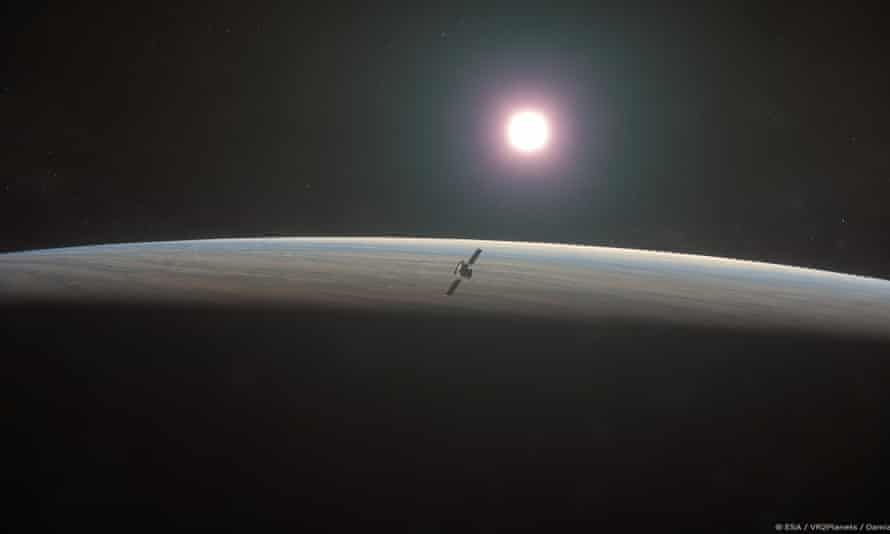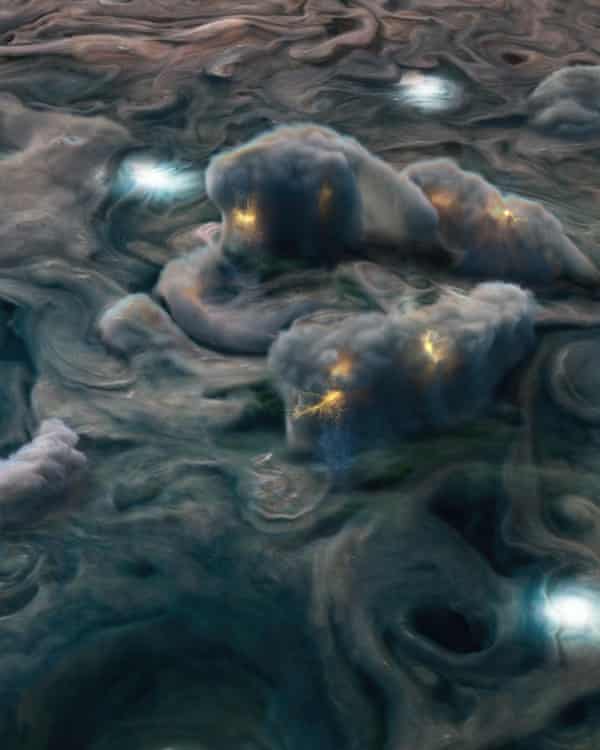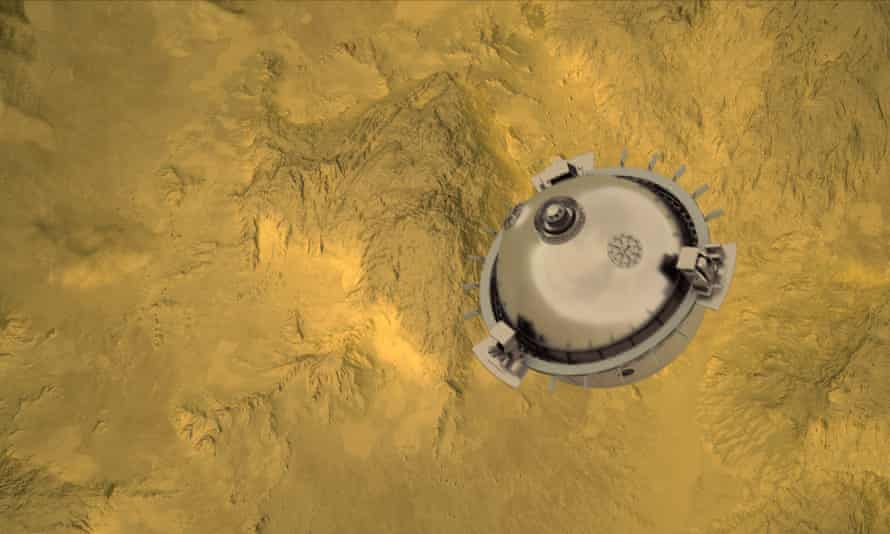Why science can’t resist the allure of Venus: new missions to Earth’s nearest planetary neighbour

With a surface hot enough to melt lead, Venus has been left alone by space agencies for a decade. Now we are about to learn more about its climate – and the chances of life on other planets
Afleet of robot spaceships is to descend on Venus in a few years and begin probing the most inhospitable world in the solar system. One craft will drop through the planet’s crushingly dense – and searingly hot – atmosphere while two others will orbit over the thick, acidic clouds that cover Venus and use sophisticated radar telescopes to survey the terrain beneath them.
Such scrutiny represents a remarkable renewal of interest in Earth’s nearest planetary neighbour. For more than a decade, American and European space agencies have ignored the planet – only for three new Venus missions to be announced within days of each other at the beginning of June.
Håkan Svedhem, former project manager for Europe’s previous probe to the planet, Venus Express, told the science journal Nature last week: “Venus has been a forgotten planet for too long.”
The aim of the new missions – Nasa’s Veritas and Davinci+ probes and Europe’s EnVision satellite – is straightforward. They want to know why Earth’s sibling planet is so utterly different from our own world.
As astronomers knew at the beginning of the “space age” in the 60s, both planets are the same size and have similar ages, compositions and orbits round the sun. Beneath the thick clouds of Venus, it was assumed there could be oceans or forests. And so a series of robot probes were sent by American and Soviet space agencies to uncover the truth in the 70s and 80s.

They revealed a world that was a vision of hell. Venus was found to have a surface temperature of 475C, which is hot enough to melt lead. At the same time, the atmospheric pressure at its surface is 93 bars, the equivalent to that experienced a kilometre under the ocean on Earth. Soviet probes that landed on Venus in the 70s and 80s managed to transmit data from the planet for only brief periods – two hours was the best they managed – before the heat and crushing pressure destroyed them.
For good measure, Venus was also found to be covered in thick clouds of sulphuric acid. By contrast, our own world possesses oceans of liquid water, clouds and ice caps and supports myriad forms of living creatures in its seas, on land and in the skies. The differences between the two planet – despite their superficial similarities – could not be more stark.
And the key cause of these vastly different sets of conditions is explained by the vast amounts of carbon dioxide that have built up on Venus. This has trapped solar radiation and triggered a runaway greenhouse effect that exists on a scale that utterly dwarfs the impact of the climate crisis that is now disrupting weather patterns and melting ice caps on Earth.
How did this build up of carbon dioxide occur, scientists ask. Did Earth get lucky or was it the case that Venus was just unlucky? Is it the norm for planets in orbits like those of Venus and Earth to develop thick atmospheres of carbon dioxide which trap solar radiation and trigger runaway greenhouse effects – or was it just a one-off development in the case of Venus?

“These are key questions and they have important ramifications, not just in understanding how life appeared and evolved on Earth,” said physicist Colin Wilson of Oxford University. “They also have implications for searching for habitable planets in orbit around other stars in our galaxy.”
At present, astronomers pin their hopes of finding promising planets that might support life elsewhere in the galaxy by seeking out small rocky worlds – like Earth – that orbit stars at a distance in which water is likely to exist in liquid form. However, to judge from the only other world in our solar system that is found in such a zone – Venus – that may not be such a promising locale, after all. In other words, if Earth is the exception and Venus the norm, we might find that such planets are far less encouraging as hosts for alien life.
This point was stressed by Giada Arney, deputy principal investigator for Nasa’s Davinci+ probe: “Our investigation of the evolution of Venus may help us better understand how habitable worlds are distributed elsewhere in the universe, and how habitable planets evolve over time in a general sense,” she said. However, it may be that Venus was simply in the wrong place. Being closer to the sun than the Earth – 67 million miles versus 93 million miles – made it slightly warmer when it formed during the solar system’s birth 4.5 billion years ago. As a result, the water vapour in its atmosphere never condensed into oceans as it did on Earth, where our seas played a key role in absorbing carbon dioxide and prevented runaway greenhouse heating.
Other evidence hints that Venus may have had liquid water on its surface at one time, and that some other event set off the rampant warming that now envelops the planet. The three new probes will try to uncover clues as what they might be. “Studying the planet’s surface will be crucial,” said Wilson. “The US Magellan probe – which arrived at Venus in 1989 – used radar to peer through the clouds and give us a wonderful global map of Venus, which revealed volcanoes and a fractured surface that had clearly gone through lots of turmoil. But it was just a snapshot.
“We don’t know if those volcanoes are still active, for example. The new space probes will take 21st-century radar technology and apply it to Venus and give us a much more dynamic picture of the planet.”

This point was backed by astronomer Professor Jane Greaves of Cardiff University. “Some instruments, such as radar and mass spectrometers, have already been used to study Venus in the past, but their technology today is so much better and more sophisticated. We will be able to probe deeper and identify molecules more easily.”
Both Nasa’s Veritas and the European Space Agency’s EnVision will be involved in mapping Venus’s surface from an orbit high above its acid clouds. By contrast, Davinci+ will carry a small probe to the planet that it will release so that it parachutes down through its atmosphere, sampling its component gases every 100 metres as it descends. These measurements will be crucial in understanding the origins of Venus’s atmosphere and provide clues about its evolution.
For example, by studying levels of deuterium, an isotope of hydrogen, it should be possible to determine how much water there once was on Venus, while analysis of noble gases – such as argon and neon – in the atmosphere may also allow scientists to determine if the planet once supported liquid water – data that will be crucial in providing clues about Venus’s path to the dark side.
“It is astounding how little we know about Venus,” said Tom Wagner, Nasa’s Discovery Program scientist.
“However, the combined results of these missions will tell us about the planet from the clouds in its sky through the volcanoes on its surface all the way down to its very core. It will be as if we have rediscovered the planet.”
No comments:
Post a Comment